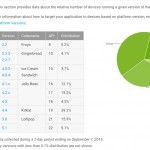Trump Signs Executive Order On Cybersecurity
President Trump on Thursday signed a long-delayed executive order on cybersecurity that "makes clear that agency heads will be held accountable for protecting their networks, and calls on government and industry to reduce the threat from automated attacks on the internet, " reports The Washington Post. From the report: Picking up on themes advanced by the Obama administration, Trump's order also requires agency heads to use Commerce Department guidelines to manage risk to their systems. It commissions reports to assess the country's ability to withstand an attack on the electric grid and to spell out the strategic options for deterring adversaries in cyberspace. [Thomas Bossert, Trump's homeland security adviser] said the order was not, however, prompted by Russia's targeting of electoral systems last year. In fact, the order is silent on addressing the security of electoral systems or cyber-enabled operations to influence elections, which became a significant area of concern during last year's presidential campaign. The Department of Homeland Security in January declared election systems "critical infrastructure." The executive order also does not address offensive cyber operations, which are generally classified. This is an area in which the Trump administration is expected to be more forward-leaning than its predecessor. Nor does it spell out what type of cyberattack would constitute an "act of war" or what response the attack would invite. "We're not going to draw a red line, " Bossert said, adding that the White House does not "want to telegraph our punches." The order places the defense secretary and the head of the intelligence community in charge of protecting "national security" systems that operate classified and military networks. But the secretary of homeland security will continue to be at the center of the national plan for protecting critical infrastructure, such as the electric grid and financial sector. Read more of this story at Slashdot.
Google’s mysterious Fuchsia OS looks like an Android re-do
When we last looked at Google's Fuchsia operating system , it was very modest. While it was designed for everything from Internet of Things devices to PCs, there wasn't even a graphical interface to show. Well, things have... evolved. Ars Technica has revisited Fuchsia several months later, and it now touts an interface (nicknamed Armadillo) that makes it clear this isn't just some after-hours experiment. It's only a set of placeholders at the moment, but it gives you a good idea as to what to expect. The home screen is a large, vertically scrolling list of cards for "stories, " or collections of apps and OS components that work together to complete a given task. There's also a Google Now -style section that has "suggestion" cards for tasks -- use them and you'll either add to an existing story or create a new one. The prototype UI also includes a simple split-screen interface, and scales up to tablet size. Fuchsia isn't based on Linux, like Android or Chrome OS, but it still uses open source code that would let anyone tinker with the inner workings. Apps, meanwhile, are built using Google's Flutter kit, which lets developers write both Android and iOS apps. Things are clearly coming along. But there's one overriding question: just what role will Fuchsia have? Google's Travis Geiselbrecht stresses that this "isn't a toy thing, " but there's no public strategy. Ars speculates that Google is treating this as a sort of Android re-do: what if the company could design a platform while dumping all the technology it no longer needs or wants, such as Linux or any traces of Java ? The use of Flutter would let you run Android apps until there's broader software support. It might take years before Fuchsia is ready for public use, assuming that's the ultimate plan, but there could be a day where Android is no longer the center of Google's computing universe. Source: Ars Technica
Los Angeles School District iPad scheme confirms all 640,000 students will benefit
Last month we reported that Apple was to provide iPads to the Los Angeles school district. At the time, the numbers looked like only a slice of the region's 640, 000 students would receive the hardware (just 31, 000 of them initially). A new update today indicates that this is actually just the first wave, and in fact every one of the region's kids will benefit from the scheme -- as confirmed by Mark Hovatter, chief facilities executive for LAUSD. This is of course great news for those in the area, but not all that bad for Apple's bottom line , either, we're guessing. Filed under: Tablets , Apple Comments Via: 9 to 5 mac
iPhone 5c Rumor Roundup: Everything We Think We Know
With Apple's next big iPhone event right around the corner , the rumor mill is churning at full speed. On September 10th, we'll know if Cupertino's nextcbig thing really is the long-fabled "budget iPhone." For the moment, it's still anyone's guess, but here's everything we think we know about the elusive iPhone 5c. Read more...












